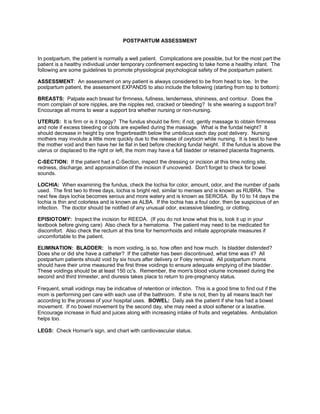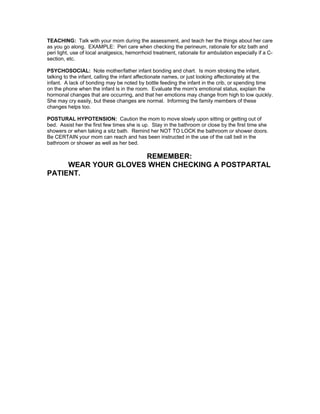The postpartum assessment involves a head-to-toe examination of the patient to evaluate physical and psychological well-being. Key areas of focus include breast and uterine exams, lochia monitoring, incision checks if applicable, and ensuring proper bladder and bowel function is returning. Nurses should provide education to patients throughout the assessment and be attentive to any signs of postural hypotension, bonding difficulties, or emotional changes.

